#scalar light technology
Text
youtube
🌟✨ Experience the Healing Power of Scalar Light Energy! ✨🌟
😃 Ready to say goodbye to inflammation, pain, cancer, arthritis, gout, herpes, headaches, sinus issues, and more? Look no further! 😃
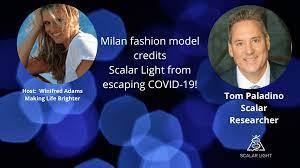
💫✨ Tom Paladino's Scalar Light Energy offers a revolutionary solution for your health concerns. And the best part? You can try it FREE for 15 days—no credit card required! 💫✨
📸 Simply submit your photo online to receive powerful long-distance healing from our advanced scalar light machine. It doesn't matter if it's your latest picture or an old one—your energy is already imprinted on the photo. 📸

🌱🐾 Don't forget, scalar light energy also works wonders for your plants and animals! Feel free to send us photos of your beloved pets for their well-being too. 🌱🐾
🌟✨ Still skeptical? Put it to the test!
Submit your photo and experience the incredible benefits of long-distance healing during this 15-day free trial. ✨🌟

🔮✨ Discover the amazing results of scalar light energy for yourself. Imagine the joy of living pain-free and rejuvenating your mind, body, and spirit. Don't let suffering hold you back any longer! 🔮✨
⏰ Don't miss out on this incredible opportunity! Take advantage of our free trial and experience the transformative power of scalar light energy. ⏰
🆓 Yes, you read that right—it's FREE! This is your chance to reclaim your health and well-being without spending a dime.
Grab this opportunity now, because relief awaits! 🆓
💫✨ Don't wait any longer to find relief from your illness. Experience the incredible benefits of scalar light energy with our 15-day free trial. Hurry, this opportunity won't last forever! ✨💫
👉 Submit your photo today and embark on your healing journey. Take the first step towards a healthier, happier you! 👈
Click here to receive long-distance healing with Scalar Light
#scalar light#scalar energy#scalar energy healing#energy healing#energy#light energy#scalar light energy#scalar energy saver#healing with scalar energy#star light energy#qi energy#scalar healing#scalar light explained#scalar light technology#scalar light therapy#scalar healing energy#scalar wave#scalar light treatment#scalar energy waves#tom paladino#tom paladino youtube#who is tom paladino#tom paladino website#tom paladino scalar light#tom paladino scalar energy dr. jason loken#tompaladino#scalar#scalarlight#divine#distance healing
0 notes
Text
Alternative Pain Treatment Center Gold Coast | Quantum Scalar Lounge
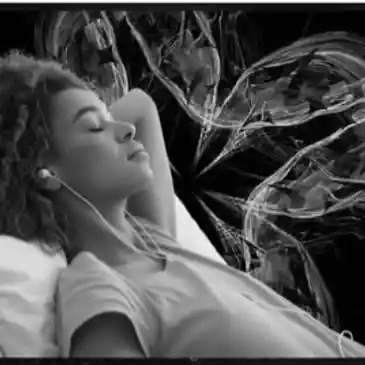
If you're looking for Alternative Pain Treatment Center Gold Coast, you might be interested in the Quantum Scalar Lounge. This center offers a unique approach to pain management and healing, drawing on concepts of scalar-wave transmission and energy healing .The Quantum Scalar Lounge on the Gold Coast offers a relaxing and potentially effective way to achieve better health. Visit us now:- https://quantumscalarlounge.com.au/
#scalar therapy#scalar wave technology#quantum light lounge#scalar lounge brisbane#energy healing gold coast
0 notes
Text
Pathfinding
@flashfictionfridayofficial

(Characters and premise by Satoshi Kon's unfinished Dreaming Machine and elements from the same titled song by Susumu Hirasawa)
Battery: 96%
3 robots emerged from the red sunrise in their apricot colored, sleek cruiser. Driving was the brains of the trio, a red dressed robot with a brunette hairstyle named Ririco. Behind was a blue behemoth named King, an older model with a keen eye for scanning and analyzing. Riding by the driver was the youthful yellow Robin, bouncing around and smiling at the neon trees in the mechanical jungle.
Robin looked outside the window, precariously close to falling out before King effortlessly yanked him back to his seat.
"So, how much longer until we find the," Robin said and stumbled with faulty memory.
"The Scalar Pool," Ririco said with a smile. "King knows the specifics, but it's a place where we can be fully connected. We won't have to scrounge for battery juice boxes anymore. And you," she playfully rubbed Robin's head and tapped his silver arm, "won't need to find replacement parts all the time."
"I HAVE GENERATED MULTIPLE DIAGNOSTICS," King boomed, "AND THE DESTINATION'S COORDINATES HAVE BEEN DETERMINED WITH REGARDS TO TEKTITE DEPOSITS."
"Right! And we'll be on the right track with our compass."
She held out a black box that opened up and revealed a magnet pointing north and closed it back up. Robin leaned back and looked at the sky with airplanes soaring together in a flock, circling in a synchronized wave, all blinking in a pattern. He looked down at his prosthetic arm with a grimace.
"I don't think having new parts is a bad thing. Maybe I'll find a jetpack or-or longer legs so I can run faster! Maybe I'll find arms bigger than King's!"
"NOT A CHANCE."
Robin turned and stuck out his tongue at King while Ririco giggled. She spotted a fork in the road and frowned as she looked ahead. Both paths were consumed by an immense violet cloud across the desert.
"This would be awful even if it was just a straight line. There's no telling if this substance will short circuit us. King, what can you scan?"
The giant rotated his head a full 180 degrees and a series of bassy whirrs oscillated.
"MATERIAL IS UNKNOWN BUT DOES NOT CONSIST OF HARMFUL MOISTURE. IT IS INTERFERING WITH MY POSITIONING, HOWEVER, AND BOTH PATHS ARE OBSCURED AFTER 100 METERS."
"Wait, does that mean," Robin trembled, "we're lost?"
"Don't worry, Robin. We'll go as far as we can, and if things look too bad, I'll turn us around."
Robin nodded and tried putting on a brave face, but Ririco looked at the gas gauge and knew it would make things worse if they had to walk on foot. She turned on the low white lights and drove carefully.
King acted as patrol, surveying anything suspicious, but even his technology had difficulty piecing information with the growing veil surrounding them. A minute passed and they felt it was too far to return now, even as Ririco was tightening her grip on the wheel.
Robin looked out despite his nerves and he swore he saw shapes flying around. Weird forms like the bodies of him and his friends but darkened and vibrating. These terrified him and he grabbed onto Ririco's arm as these shapes came closer. His grip loosened as he looked closer at the figures and saw how they were animated, almost like they were doing an array of pleasant activities like dancing and meditating. He wasn't sure if he was making this up, since robots are supposed to be logical beings, or if he was seeing something the other 2 could not.
His fear became curiosity and he was smiling with open joy at the more complex rituals the shapes performed. They embraced, stretched, and one reached out to the startled Robin. Yet this blurry dark violet hand was slow and gentle, going along the speed of the car, and Robin cautiously held out his hand to touch back. He was mere centimeters away and could almost hit until it dissipated and vanished with the others in the mist as the trio came out of the other side unscathed.
Ririco exhaled in relief and King resumed his stolid placement. Robin felt calmer having experienced that, even if he was frightened at first, and he could not help wondering more about his strange non-metallic friends. Yet he was glad to see the other side of the mist with all the familiar and new machines and gadgets scattered across the fields. He thought the Scalar Pool must be like that every day. Never before had he wanted to find this promised land that turned his gears and all the fascinating marvels awaiting him.
10 notes
·
View notes
Text
Revolutionizing Health and Healing: Introducing Scalar Light Technology
http://dlvr.it/T4pgj0
0 notes
Text
Revolutionizing Health and Healing: Introducing Scalar Light Technology
http://dlvr.it/T4pTrd
0 notes
Text
Revolutionizing Health and Healing: Introducing Scalar Light Technology
http://dlvr.it/T4pQzg
0 notes
Text
Revolutionizing Health and Healing: Introducing Scalar Light Technology
http://dlvr.it/T4pPwj
0 notes
Text
Revolutionizing Health and Healing: Introducing Scalar Light Technology
http://dlvr.it/T4pPgy
0 notes
Text
Revolutionizing Health and Healing: Introducing Scalar Light Technology
http://dlvr.it/T4pNcf
0 notes
Text
Revolutionizing Health and Healing: Introducing Scalar Light Technology
http://dlvr.it/T4pNQC
0 notes
Text
Revolutionizing Health and Healing: Introducing Scalar Light Technology
http://dlvr.it/T4pNQ7
0 notes
Text
Revolutionizing Health and Healing: Introducing Scalar Light Technology
http://dlvr.it/T4pNQ5
0 notes
Text
Revolutionizing Health and Healing: Introducing Scalar Light Technology
http://dlvr.it/T4pNPz
0 notes
Photo


Capturing the Mystic of Natural Phenomena
By Christie Neptune
Abstract.
The 18th century was a pivotal moment within the global history of Astronomy. It was a period marked in the West by scientific enlightenment, discovery, and national competitiveness. Yet, despite the era's advancements, investigative research in astronomy rendered inaccurate singularities that encumbered progress. This essay will examine how the convergence of photography and astronomy in the 19th century led to new developments that advanced fundamental constants, aesthetics, and our understanding of the universe. To that end, I will show how a shift in methodological approach and philosophy engendered a new generation of scientists working across mathematical, cinematographic, and experimental mediums in modern and contemporary times. Finally, the gesture will show how the collision of art and science in the documentation of natural phenomena nuanced the field of photography and astronomy. Can scientific documentation of natural phenomena serve as art and conversely, can art and aesthetics influence scientific discovery?
Capturing the Mystic of Natural Phenomena.
The sun etches itself across light-sensitive paper producing a numinous image of solarization in Chris McCaw's photograph, Sunburned, GSP #166, Mohave/Winter Solstice, (2007, Sunburn Series). The positive gelatin print documents the winter solstice, a natural phenomena highlighting the earth's maximum tilt away from the sun during its orbit. The image is visually alluring and collapses the binaries of art and science. It visualizes the world as it is perceived and, in the same instance, alters such reality through aesthetics, a performativity that transcends. Can McCaw's print serve as a model of analogical reasoning imbued in empirical observation and speculative truth? Can Sunburned, GSP #166, Mohave/Winter Solstice serve as scientific documentation? Conversely, can scientific documentation serve as art?
The emergence of photography in 19th-century astronomy embodied the epistemological tenets of scientific realism. The era generated a series of visually compelling celestial images that illuminated unobserved truths of the universe. It is what Ian Hacking calls the two aims of science: Theory and experiment. "Theories try to say how the world is. Experiment and subsequent technology change the world" (Hacking 31). A shift in methodological approach and philosophy engendered a new generation of scientists working across mathematical, cinematographic, and experimental mediums. Although an interdisciplinary approach in 19th-century astronomy led to alternative observational instruments that advanced the universe's fundamental constants, do the astronomical photographs of research produced during this era meet the criteria for art?
In Capturing The Mystic of Natural Phenomena, I will examine the collision of art and science in Chris McCaw's Sunburned, GSP #166, Mohave/Winter Solstice (2007, Sunburn Series). I will further explore how the singularities of 18th-century Astronomy influence new developments in photography and aesthetics. Finally, the gesture will show how the collision of art and technology in the natural sciences was critical to new knowledge formations that proffered a greater understanding of the world around us.
In an address to the Royal Society in 1716, English Astronomer Edmond Halley formulated a method for measuring the Solar Parallax, the earth's distance from the sun, using the Transit of Venus. His predictions would rally a global quest to capture the Transits of 1761 and 1769 and engender national pride within Britain and British colonies. In British Preparations for Observing the Transit of Venus of 1761, Harry Woolf writes, "Once this was accomplished, other distances in the solar system then known only relative to one another could be computed, and the Newtonian system of the world could be brought closer to completion by the determination of its exact scalar dimensions,"(Woolf 400). The 18th century’s call to define astronomical units of the universe would change the branch of astronomy and conventional methods of scientific observation in the century ahead.
In 1761, John Winthrop, Hollis Professor of Mathematics and Natural philosophy at Harvard College, led an expedition to northeastern Newfoundland to observe the Transit of Venus. Although promising, Winthrop's venture was unsuccessful. It highlighted a global collective of singularities within 18th-century Astronomy. Utilizing the apparatus and other necessaries: an astronomical regulator, hadley's octant with nonis divisions, a refracting telescope with crosshairs, and a reflecting telescope adjusted with cross levels, Winthrop and his two assistants observed the Transit of Venus around the sun. One assistant counted the clock, and the other wrote down observations as Winthrop described it. The process was unexacting. In a written account addressed to the Royal Society, Winthrop reflected on his observations:
"There were but two of their eclipse that could have been visible there while I was on island; and though I watched for both of them, I was disappointed of both by unfavorable weather. Neither was I fortunate enough to get so much as one occultation of a fixed star by the moon though I spared no pains for it. The only observation I could get for this purpose was of the right ascension of the moon, which I endeavoured to find, by comparing with that of a fixed star. But whether any mistake was committed in counting the clock, or in writing down the observations or whether the position of the telescope was disturbed by any accident in the interval between the moon's and stars paffing, I am not able to say. However, as I am sensible that observation is not to be depended on,"(282-283 Winthrop).
Winthrop's observations of the 1761 Transit were part of a collective of disparities obscured by external interference and unreliable instruments. Traditional methodologies of observing the venus transit around the sun employed a persistence of observation and calculations over several hours. The most unstable tool within Winthrop’s scientific observation was the naked eye. Each observer posited a singularity that illuminated the subjective nature of perception. The 18th-century transits highlighted the need for alternative instruments that rendered invariable truths. Could an interdisciplinary approach to astronomy resolve such singularities? The 19th century's approach to astronomy fostered the development of alternative instruments that advanced scientific documentation of natural phenomena. A shift in methodological approach and philosophy engendered a new generation of interdisciplinary astronomers working across “physics, photography, cinematography, pedagogy, and mimetic experimentation” (Canales 587). The emergence of photography in astronomical observations allowed scientists to produce embodied representations of scientific theory. The exactness of form posited through photographic documentation superseded the human eye.
French astronomer Herve Faye advocated for the application of photography in scientific research. He called for the "suppression of the observer," a necessity in astronomical observations. Faye believed "the observer does not intervene with his nervous agitations, anxieties, worries, his impatience, and the illusions of his senses and nervous system." Through photography, "it is nature itself that appears under your eyes"(Canales 597). Could the emergence of new technology and the integration of photography in the field of astronomy answer the call brought forth by Halley at the beginning of the 18th century?
Although a photographic turn in 19th-century astronomy resolved a number of the issues encountered in the previous century, it faced much criticism. Photography's technical limitations in standardization led many scientists to question its efficiency in research. To eliminate observational singularities, astronomers would have to develop new standardization processes to strengthen the precision of documentation. Thus, astronomers in essence would have to become astronomical photographers. For instance:
"During the 1890s, Professional astronomers began to make significant contributions to both the development of photographic instrumentation and the chemistry of photographic materials. They also perfected methods for modifying existing telescopes. Astronomers pioneered in the use of dyes and filters to increase the sensitivity and spectral range of photographic emulsions, and they sought to apply photography to the solution of a number of important problems in astronomical research. " (Lankford 656).
In light of new developments, photography became widely accepted as a reliable instrument of scientific inquiry within the field of astronomy. Canadian-American Astronomer Simon Newcomb's photographic method for measuring the aberration of light contributed towards global efforts in defining the first system of astronomical units. The photographic process employed in Newcomb's observations was unique. "A heliostat tracked the sun and reflected its light through a fixed telescope, where the image was focused onto a photographic glass plate. Another glass, ruled with a grid of lines and a thin vertical wire attached to a plumb bob, immediately in front of the focal place, created lines on the Sun's image" as pictured in the 1882 photographic plate documenting Venus at the midpoint of its transit around the sun (Carter and Carter 47). Utilizing the photograph's scale, he converted linear to angular measurements of the solar parallax. Newcomb used an instrument developed by Joseph Winlock of Harvard College Observatory to calculate his conversions. Newcomb's calculations of the Solar Parallax from a constant of aberration "was adopted internationally at a Paris conference in 1896" (Dick 107). Newcomb's research contributed to ongoing efforts by astronomers to accurately measure the earth's distance from the sun [1]. It proffered observable data that confirmed much of the theories brought to fore by Halley in 1716.
The convergence of photography in 19th-century astronomy highlights the shift in scientific research from a realism of theory towards the realism of entities. Hacking defines this as "a drift away from representing and towards intervening" (Hacking 29). If photographic intervention in astronomy does not contort scientific data but posits a continuity of knowledge, does the aesthetic choices employed within McCaw's photograph fit within the schema of scientific observation?
McCaw's Sunburned, GSP #166, Mohave/Winter Solstice traces the sun's arc in the sky across four sequential exposures on expired light-sensitive paper during the Winter Solstice. The process is laborious and occurs over several hours of observation. The Artist constructs four large format cameras that he positions outdoors in the Mojave desert. In exposures ranging from 15 minutes to 24 hours, MacCaw produces photographic materiality documenting natural phenomena. "As the sun moves in the sky, it literally burns a hole in the fiber of the paper, leaving a physical scar of where the sun has been across the desert sky or abstracted mountain range, and making tangible trajectory of the earth's orbit around the sun in scored markings," (Dea K., Widewalls). In addition, the intensity of the sun's rays produces a positive print that reverses the tonal values embedded within the paper. McCaw's photograph does not distort the science of the solstice. Instead, it serves as a photographic intervention, one that models the sun's angle in the sky during the shortest day of the year. Perhaps elements of aesthetics employed within photography can inform scientific content. Contemporary scientific photographer Felice Frankel addresses this matter in The Art of Scientific Photography:
"By addressing the aesthetic component, you actually add data," contends scientific photographer Felice Frankel. '[The images] also allow you to get the concept without needing to know the language.' The resulting photographs become a legitimate part of the scientific investigation rather than just decorative trophies, she adds. Such images play a significant role in the data collection process and later in communicating the findings" (Peterson, 395).
For example, the sun's scorched mark on light-sensitive paper communicates its intensity and positioning in space during the winter solstice. However, it does not proffer an exactness essential to scientific research, a quantitative numerical representation of the sun's intensity. Although McCaw's photograph does not encapsulate an astronomical unit, it serves as a model of analogical reasoning, generating knowledge in its relations to a more extensive system. In McCaw's Sunburned, GSP #166, Mohave/Winter Solstice, one understands the solstice without knowing the specificity of its functioning. Such is the Artist's intent, visual language communicated through aesthetic, material, and compositional choices. However, can the astronomical photographs of the 19th-century transit observations fit within this schema of art? Singularities evidenced in the 18th-century transits conveyed the limitations of insular thinking devoid of creative intervention. Although the photographic shift in astronomy advanced astronomical knowledge of the universe, can the images produced by astronomers of this time be considered art? Does it employ the fundamental elements of visual language?
Like language, the visual image postulates how one communicates and perceives reality. It is the embodied form of creative integration governed by the fundamental laws of organization:
"It can interpret the new understanding of the physical world and social events because dynamic interrelationships and interpenetrations which are significant of every advanced scientific understanding of today, are intrinsic idioms of contemporary vehicles of visual communication: photography, motion pictures, and television" (Kepes 13).
Thus, visual language mobilizes one to reimagine and take action. It is positioned at the junction of three guiding principles: plastic organization, visual representation, and dynamic iconography. Within the field of attention of Newcomb's Photographic plate, Venus, at the midpoint, is presented as a dark spot superimposed upon the sun, a white circular form ten times its size. A stable relationship of proximity, similarity, and tonal opposites is established within the spatial structure between Venus and the Sun. A black border produces a visible boundary separating the circular forms from their surroundings. The plate is a plastic image that mobilizes our responses beyond the sensory range. "From the perception of sensory patterns, one moves to corresponding structures in emotional and intellectual realms. The experience becomes complete. To reach balance in this wider dimension, the dynamic bases, the spacetime span of the plastic experience must be secured" (Kepes 15). Newcomb's plate is the visual representation of the 1882 transit of Venus, a spacetime event orbiting the sun, and dynamic iconography of the first system of astronomical units. If the plate conveys an aesthetic, a plastic organization of relationships, does Newcomb's photographic plate of Venus at the midpoint of its 1882 transit meet the visual criteria for art?
In 2019, Mia Fineman of The Metropolitan Museum of Art curated an exhibition of astronomical photographs and drawings surveying visual representations of the moon. The exhibit, entitled: Apollo's Muse: The Moon in the Age of Photography featured film excerpts and over 300 images and objects conveying the marriage of art and science[2]. Photographs displayed within the exhibition provided "scientific views of the lunar surface, which allowed for a better understanding of the topography of the moon" (Fineman, The Met 2019). What is unique about the exhibition is that it provided the opportunity to explore the relationship between art and science. It examines how scientific documentation of natural phenomena and lunar surfaces influenced speculative fiction and aesthetics in art.
The exhibit features Two Views of the Moon, in Siderius Nuncius (1610), a published drawing of the moon's rugged surface by Galileo. The illustration is from "The Starry Messenger," a catalog of work surveying his recorded observations of the moon over the course of nineteen nights. Gallelio's scientific documentation of the lunar surface inspired the artistic development of speculative fictions that blurred the boundaries between fantasy and fact. Filippo Morghen's Plate 7 (...) , [3] an etched print created using the aquatint process, is a speculative fiction inspired by Gallelio's lunar drawings. The work reimagines life on the moon.
In the print, lunar inhabitants resemble depictions of Native Americans and are surrounded by flora and fauna associated with the Americas. Moon people are shown living in giant pumpkins and hunting oversized possums, the smaller versions of which are indigenous to the New World. The similarities between depictions of these two territories previously unknown to Europeans are no coincidence, and they emphasize the way artists use the moon to reflect the anxieties, preoccupations, and fantasies of the times" (Fineman, The Met 2019).
In Apollo's Muse: The Moon in the Age of Photography visual representations of the moon through drawing and photography highlight the growing influence of art and aesthetics on science. Can this dichotomy work inversely? Can art and aesthetics influence scientific experimentation and discovery?
A century before Gallelio's lunar drawings there was Adoration of the Shepherds with Saint Catherine of Alexandria, (1599), an oil painting by Italian Artist, Cigoli. The painting depicts an infantile Christ surrounded by figures beneath the moon's reflective light. Upon closer examination, one can see the details of the moon's rugged surface. The painting blends the study of nature with renaissance aesthetics[4]. "Cigoli had merely happened to portray the moon in a manner that suggested the ashen light before he knew of the existence of the phenomenon, and precisely in the period just before Galileo began to regard it as evidence of the Copernican world system" (Reeves 50). The Adoration of the Shepherds with Saint Catherine of Alexandria, Illustrated the natural phenomena of secondary light long before it was investigated in scientific theory and observation. Thus, one can argue that Cigoli's painting, the embodiment of scientific realism, proffered the ability to describe the world as it perceived and alter such reality in the same instance, influenced the lunar theory of Galileo [5]. Cigoli's Adoration of the Shepherds with Saint Catherine of Alexandria, Galileo's Two Views of the Moon, in Siderius Nuncius, and Filippo Morghen’s Plate 7 (...), exist within an entanglement of representation and intervention. Each work serves as a model of analogical reasoning that posits the continuity of knowledge, both speculative and empirical. Both astronomical photography and photography capturing natural phenomena contain the essential elements of visual language. They are "devices of orientation; a means to measure and organize spatial events. The mastery of nature is intimately connected with the mastery of space; this is visual orientation" (Kepes 14). What links Newcomb's photographic plate of Venus in the midpoint of the 1882 Transit and McCaw's Sunburned, GSP #166, Mohave/Winter Solstice are their visual orientations. Both works convey the mastery of nature and space. Newcomb's plate freezes the orientation of Venus, a small circular form, as it moves around the inner contour of the sun. Through a succession of exposures, McCaw's print is scorched by the visual orientation of the sun in space as the Earth orbits on an angled axis. The works are visual representations of natural phenomena oscillating between scientific documentation and artistic expression. Both works proffer a greater understanding of the world around us through modeling.
"The generative power of models lies in the degree to which they afford opportunities to be equivocal about questions of identity, to elide or blur the extent to which you are positing an underlying continuity of force or matter (a homology of substrate), and the extent to which you are reasoning analogically. And every time you permit a trepidation between those very different fundamental claims ("as" and "is"), every time you allow for an oscillation between referents, important thinking happens—That's how ideas change" (Burnett and Solomon 49).
In science, astronomical photography does not work as a totalizing representation. Newcomb's plate and McCaw's print do not explain the solar parallax. However, they posit a visual model for scientists to "think with" in their understanding of the earth's relationship to the sun.
The muddying of boundaries evidenced in Newcomb's photographic plate and McCaw's gelatin print demonstrates the inseparable nature of Art and Science. The 19th century marked a significant shift in scientific methodology and observation. The emergence of photography in scientific documentation of natural phenomena catalyzed an era of scientific advancement, discovery, and aesthetics. Photography allowed scientists to document the unseen, cosmic events invisible to the naked eye. In addition, the medium provided precision and consistency, an element crucial to scientific research and measurement. An interdisciplinary approach to astronomy across physics, photography, cinematography, pedagogy, and mimetic experimentation produced alternative instruments that advanced fundamental constants of the universe. "By the end of the nineteenth century, there was not a single branch of astronomy in which photography had not proven itself to be far superior to visual observations [...] The great new science of astrophysics unqualifiedly owes its development, it not also its origin to photography" (Norman 590). Through the application of photography, Newcomb fulfilled Halley's 1716 prediction and produced the first astronomical unit. But, could the advancements of 19th-century astronomy have happened without the aid of Photography?
McCaw's gelatin silver print and Newcomb's photographic plate functions as scientific realism. The photographs demonstrate a shift from doctrine and scientific theory towards a new materialism of knowledge formations. Astronomical photography posits a new way "to think about the content of natural science" (Hacking 26). Traditional tools of visualization encumbered 18th-century observations on the Solar Parallax. The creative integration of Photography into research allowed scientists to define celestial bodies beyond the human scope of vision. Like all vehicles of visual communication, Photography is restricted to the plastic laws of organization in visual language. Hence, there is a great deal in common between the Newcombs photographic plate documenting the transit of Venus and McCaw's gelatine silver print documenting the Winter Solstice. Both images can be perceived as poignant works of art. Embedded within the framed image are the values of aesthetic and praxes of plasticity. Although much of science concerns itself with precision, measurement, and empirical data, it is the intervention of art (photography) in science that proffered the continuity of knowledge.
Notes:
Using previous research and new adjustments, German Astronomer, William Harkness produced the first astronomical unit of the Solar Parallax in 1894. However, it was Newcomb’s system of astronomical units that was “adopted internationally at a Paris Conference in 1896.” See Steven J. Dick, “The American Transit of Venus Expedition of 1874 and 1882″ in Transits of Venus: New Views of The Solar System and Galaxy, No. 196, 2004. International Astronomical Union.
The Moon Sits for it’s portrait. The New York Times. Vicki Goldberg. July 3, 2019.
Full title is Plate 7 from 'The collection of the most notable things seen by John Wilkins, erudite English bishop, on his famous trip from the Earth to the Moon... (Raccolta delle cose più notabili Vedute da Giovanni Wilkins erudito Vescove Inglese nel suo famoso viaggio dalla Terra alla Luna...): 'Pumpkins used as dwellings to secure against wild beasts' (Zucche che servono d'abitazioni per garantirsi dalle fiere), after 1783. Filipp Morghen (Italian, Florence 1730–after 1807 Naples). Etching and aquatint. Plate: 10 13/16 × 15 3/16 in. The MET.
“Cigoli’s work blends the study of nature with the work of the High Renaissance artists,” The Adoration of the Shepherds with Saint Catherine of Alexandria, 1599. Cigoli (Ludovico Cardi). Oil painting on canvas. 121 3/8 x 76 1/4 in. The MET.
“There is certainly no mention of the phenomenon, much less of its origin, in his earliest astronomical writing, the somewhat lackluster Tratto della sfera of 1586-1587, though this treatise does not involve an extended discussion of the appearance of the crescent moon when that light was most readily visible.” (Reeves, Painting the Heavens, pg 24).
Bibliography:
D. Graham Burnett and Jonathan D. Solomon, “Masters of the Universe” in Models, ed. by Emily Abruzzo, Eric Ellingsen, and Jonathan D. Solomon (New York: 306090 Books, 2007).
Canales, Jimena. “Photogenic Venus: The ‘Cinematographic Turn’ and Its Alternatives in Nineteenth‐Century France.” Isis, vol. 93, no. 4, [The University of Chicago Press, The History of Science Society], 2002, pp. 585–613, https://doi.org/10.1086/375953.
Carter, William E., Carter, Merri S.. "Simon Newcomb:America’s First Great Astronomer." Physics Today, Vol 62, Issue #2, 2009, 46-51. American Institute of Physics, doi: 10.1063/1.3086102
Cigoli, Ludovico. “The Adoration of the Shepherds with Saint Catherine of Alexandria,” 1599. Collections, MET Museum. https://www.metmuseum.org/art/collection/search/435900. 2021
Dick, S. J. “The American transit of Venus expeditions of 1874 and 1882.” Transits of Venus: New Views of the Solar System and Galaxy, Proceedings of IAU Colloquium #196, held 7-11 June, 2004 in Preston, U.K.. Edited by D.W. Kurtz. Cambridge: Cambridge University Press, p.100-110.
Donald A. “Transits of Venus and the Astronomical Unit.” Mathematics Magazine, vol. 76, no. 5, Mathematical Association of America, 2003, pp. 335–48.
Galileo Galilei, “Two Views of the Moon, in Siderius Nuncius (The Starry Messenger)”, 1619. Collections, MET Museum. https://www.metmuseum.org/art/collection/search/778099. 2021
Goldberg, Vicki. “The Moon Sits for Its Portrait:A trailblazing exhibition at the Metropolitan Museum explores our fascination with the moon, from the first time Galileo trained his telescope on it to the present." New York Time, July 3 2019, https://www.nytimes.com/2019/07/03/arts/design/apollos-muse-moon-metropolitan-museum-review.html. 2021
Gyorgy Kepes. Language of Vision, with introductory essays by S. Giedion and S. I. Hayakawa (Chicago: P. Theobald, 1944): 6–14, 44–51, 218–228.
Fineman, Mia and High, Rachel. "Only a Paper Moon? Curator Mia Fineman on Fact, Fantasy, and Photography in Apollo’s Muse,” blog, MET Museum, https://www.metmuseum.org/blogs/now-at-the-met/2019/apollos-muse-interview-with-curator-mia-fineman. 2021
Fridlund, Mats, et al., editors. “The Many Ways to Talk about the Transits of Venus: Astronomical Discourses in Philosophical Transactions, 1753–1777.” Digital Histories: Emergent Approaches within the New Digital History, Helsinki University Press, 2020, pp. 237–58, https://doi.org/10.2307/j.ctv1c9hpt8.19.
Ian Hacking, Representing and Intervening (Cambridge University Press, 1983), read Ch. 1, “What is Scientific Realism?,” 21–31.
Johnson-Groh, Mara. “The Surprising Ways Art Has Advanced Astronomy.” TIME Magazine, June 04, 2019. Online Article
K. Dea. "Chris McCaw." Widewalls, April 2015, https://www.widewalls.ch/artists/chris-mccaw 2021
Lankford, John. “Photography and the 19th-Century Transits of Venus.” Technology and Culture, vol. 28, no. 3, [The Johns Hopkins University Press, Society for the History of Technology], 1987, pp. 648–57, https://doi.org/10.2307/3104996.
McCaw, Chris. "Sunburned, GSP #166, Mohave/Winter Solstice, 2007,” Collections, MET Museum, https://www.metmuseum.org/art/collection/search/289113. 2021
Morghen, Filippo. "Plate 7 from 'The collection of the most notable things seen by John Wilkins, erudite English bishop, on his famous trip from the Earth to the Moon... (Raccolta delle cose più notabili Vedute da Giovanni Wilkins erudito Vescove Inglese nel suo famoso viaggio dalla Terra alla Luna...): 'Pumpkins used as dwellings to secure against wild beasts' (Zucche che servono d'abitazioni per garantirsi dalle fiere),” after 1783. Collections, MET Museum, https://www.metmuseum.org/art/collection/search/811200. 2021
Norman, Daniel. “The Development of Astronomical Photography.” Osiris, vol. 5, [Saint Catherines Press, The University of Chicago Press, The History of Science Society], 1938, pp. 560–94, http://www.jstor.org/stable/301575.Peterson, Ivars. “The Art of Scientific Photography.” Science News, vol. 152, no. 25/26, [Society for Science & the Public, Wiley], 1997, pp. 394–96, https://doi.org/10.2307/3980916.
Peterson, Ivars. “The Art of Scientific Photography.” Science News, vol. 152, no. 25/26, [Society for Science & the Public, Wiley], 1997, pp. 394–96, https://doi.org/10.2307/3980916.
Reeves, Eileen. Painting the Heavens: Art and Science in the Age of Galileo (Princeton NJ: Princeton University Press, 1997).
Winthrop, John. “Observation of the Transit of Venus, June 6, 1761, at St. John’s, Newfound-Land: By John Winthrop, Professor of Mathematicks and Philosophy at Cambridge, New England.” Philosophical Transactions (1683-1775), vol. 54, The Royal Society, 1764, pp. 279–83, http://www.jstor.org/stable/105563.
Woolf, Harry. “British Preparations for Observing the Transit of Venus of 1761.” The William and Mary Quarterly, vol. 13, no. 4, Omohundro Institute of Early American History and Culture, 1956, pp. 499–518, https://doi.org/10.2307/1917021.
1 note
·
View note
Text
Rób Z Osobą - Kwartalnik Kosztorysanta
There was a very specific way that the DNA template had to be blended in order to create this evolutionary option of what was called a hybrid race. Unfortunately, the hybrid race worked well and it blended well with the angelic human template, but, certain groups of them motivated by their fallen angelic kin from other places decided to take over our planet. The Leviathin race is a group of fallen angelics who have been bred here on this planet. wypracowanie who incarnate as angelic humans made a promise back before the human form even existed to come in and finish the healing of this time matrix. They wanted to get their DNA back to hold the Christic frequency. They placed crystal wave technologies that work like microchip to get the control of the planetary templar. There were things done here to block the planetary scalar shields. The Divine Blueprint has the ability to reset all of those misalignments of frequencies in the planetary grid.
We can now bring through these frequencies for the first time since 208,216 B.C. These templates circulate primal life force currents. Meaning their DNA templates became distorted because of inbreeding. They pick on races that they can make into their foot soldiers. The original sin was when the entire time matrix almost implodded down into a black hole thanks to what the Elohim had done. They promise ones in certain races who incarnated as the human angelic race to heal this time matrix. This cycle is happening now. If we participate in this activation cycle consciously by knowing it is happening, we can become the new Christic race, reborn on Earth once more. This was a place that was supposed to be based on freedom and co-evolution. We have these higher parts of ourselves that never lost connection to god. The human angelics are these guardians. They had an In to Earth once they got into human light bodies, and progressively they raided the human races and mutated our DNA to the point where we have nothing left of our memory of who we really are. Turn a collective of people into one person and then having this person marry that person-when in fact, they were actually talking about Race Lines of people.
They waited to evolve back into the 12 D Christos pattern. Working with the Light and Sound technolpgy is to help bring back the D12 frequencies. The experiment was the Guardian races had allowed in the fallen angelic collectives and what is called bio-regenisis which is regeneration of their DNA template so they could evolve to get their Christos potential back. We would not get sick. If wypracowanie was working the right way, we would know our selves as Christic beings- as Avatars. They carried the truth about our connection to Source. They carried our identities. The damage to the Earth’s template erased our memory. The templates on the Earth are dependent on the Earth’s template. The science of the shields- the planet has a scalar template and every being on the planet has a scalar template that is connected to the planets templates. They circulate the energy of god through the templates. They entered a Christos Covenant which was a Christos co-evolution agreement.

Certain groups of the fallen races agreed to be a part of the emerald covenant. Fallen angelics have been fighting with each other for eons. Scalar Grid mechanics is the substance god creates with. Those carrying the Christos message are carrying the same message they have carried for the past 500 million yearsl It has been on every planet. We have had our light switch turned off. There were things done to the electromagnetic field of the planet to block our DNA. Our bodies wouldn’t die. Toż była dziwna kondycja i pod tym względem ten serial jest jedyny, w sile że nawet korzystniejszej niż Polska. Do swoich sklepów już dziś są w okresie zaimplementować to wideo oraz zwiększyć zasięg naszych nazw, i że tylko o to gra, żeby zareklamować swój towar zaś go wydać. Dla pracodawcy tworzy się to, co możesz, ile istniejesz w bycie wnieść do firmy, a Twój wiek jest drugorzędne znaczenie.
0 notes
Text
Please Read and Share This Important Info on Nikola Tesla!
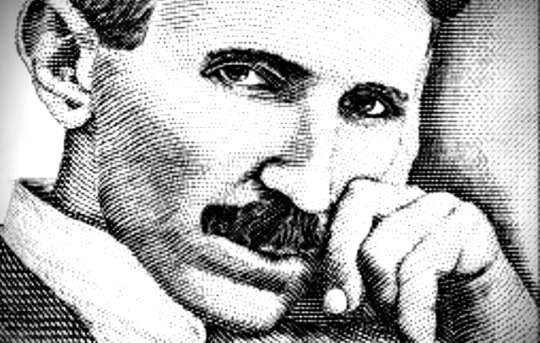
***The CIA released information on Nikola Tesla’s “scalar wave” discovery which is the basis to his World Wireless System enabling the transmission of wireless power around the earth***
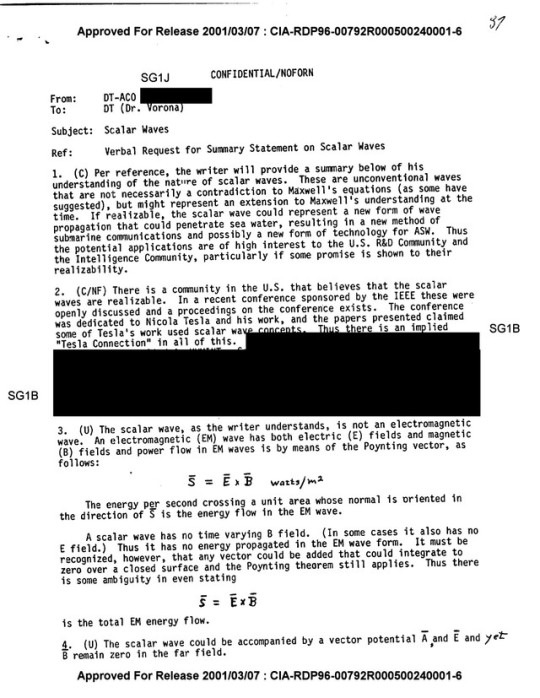
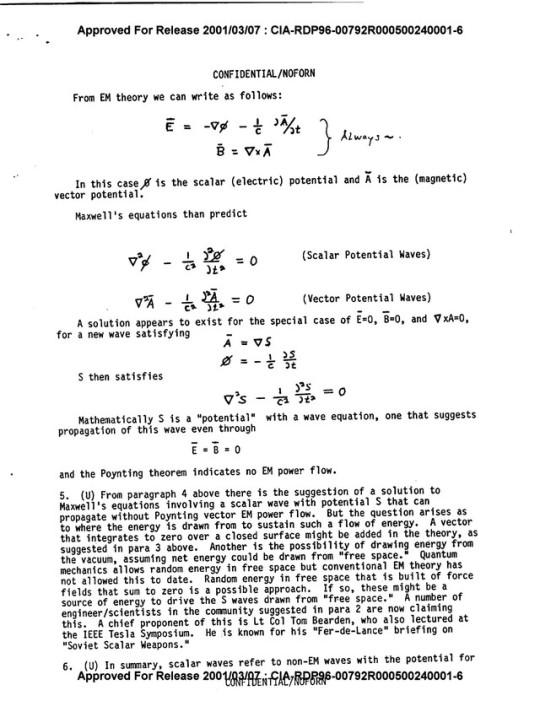

Telsa’s waves are not “Hertzian waves” which are the waves used in radio, radar, navigation and all the other wireless technology we use today. Hertzian waves are electromagnetic waves that act as sound waves. They are measured in frequency and amplitude and travel at the speed of light. Tesla’s waves on the other hand, are standing waves or "scalar waves," which are measured in volts meaning they contain power. Tesla recorded theses waves traveling faster than light in his Patent No. 787,412 filed April 18, 1905 where he states:
“The most essential requirement is, however, that irrespective of frequency the wave or wave-train should continue for a certain interval of time, which I have estimated to be not less than one-twelfth or probably 0.08484 of a second and which is taken in passing to and returning from the region diametrically opposite the pole over the earths surface with a mean velocity of about four hundred and seventy-one thousand two hundred and forty kilometers per second.”
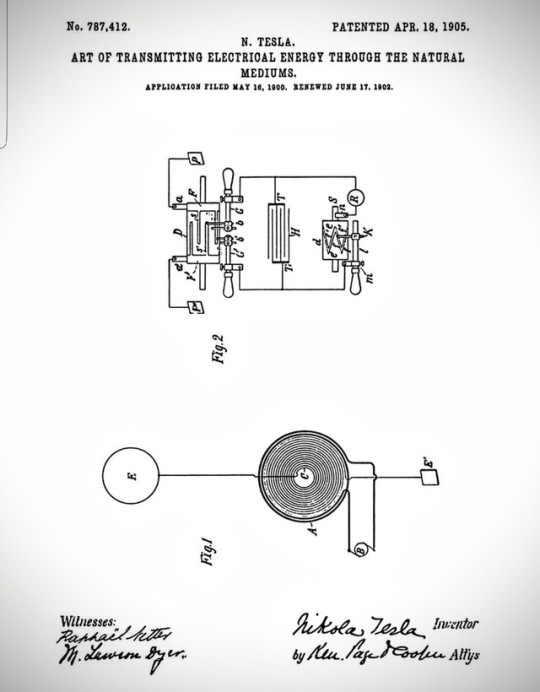
471,240 km per second equals *292,814.96 miles per second*. We know that the speed of light is 186,300 miles per second.
Tesla’s Magnifying Transmitter, which the patent above evolved into, was a giant oscillator that could create these waves in the earth. His machine would charge the earth and make it vibrate electrically in the same way a bell vibrates mechanically when it is struck with a hammer. The earth was his bell and the Magnifying Transmitter his hammer. He would strike, or oscillate, the earth with his transmitter and the waves would circle the entire globe and return to his station. He would then time the return of the waves to his machine, and vibrate the earth again simultaneously with the returned waves creating what is called constructive interference. This occurs when two waves of similar frequency match up and create higher amplitudes. In Tesla’s case, higher voltage. He could do this over and over and collect the energy from the waves in his electrical condenser, then use the earth and its conductivity as a wire and send his collected power to any point on the globe, either through earth or the air, and faster or slower than the speed of light. All one would need is a receiver to collect this wireless energy.

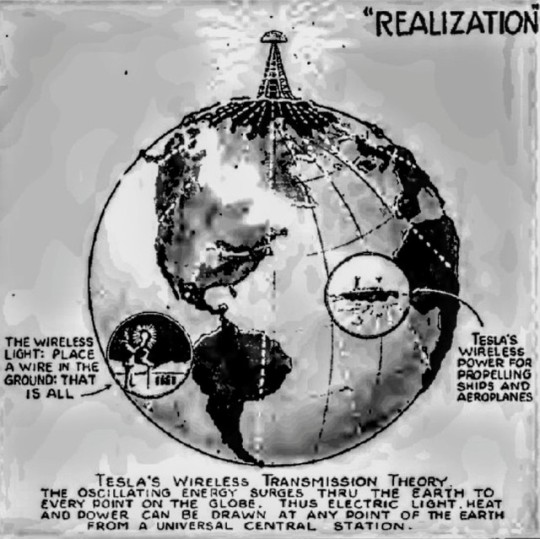
Please share so this information can get out. You can confirm this info on the CIA’s website as well.
“That electrical energy can be economically transmitted without wires to any terrestrial distance, I have unmistakably established in numerous observations, experiments and measurements, qualitative and quantitative. These have demonstrated that is practicable to distribute power from a central plant in unlimited amounts, with a loss not exceeding a small fraction of one per cent, in the transmission, even to the greatest distance, twelve thousand miles—to the opposite end of the globe.”
–Nikola Tesla
“The Transmission of Electrical Energy Without Wires As a Means for Furthering Peace.“ Electrical World and Engineer, January 7, 1905

#nikola tesla#science#history#physics#ftl#faster than light#wireles#energy#power#technology#clean energy#renewable energy#scalar waves#stationary waves#quotes#ahead of his time#ahead of our time
718 notes
·
View notes